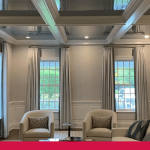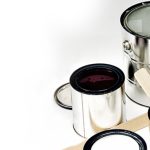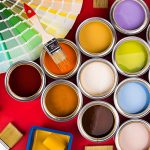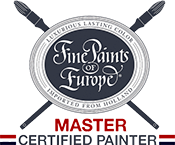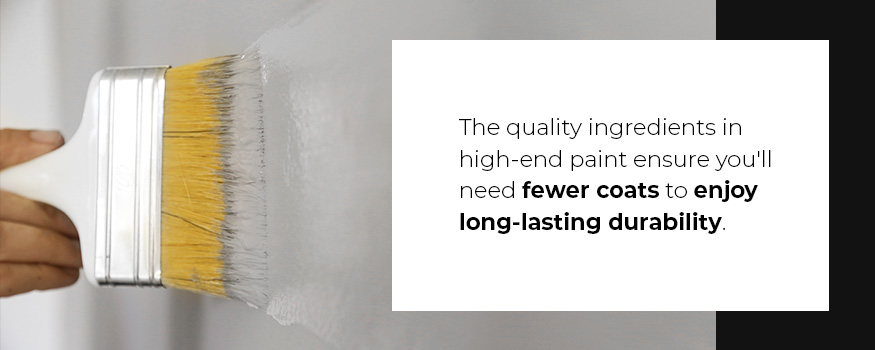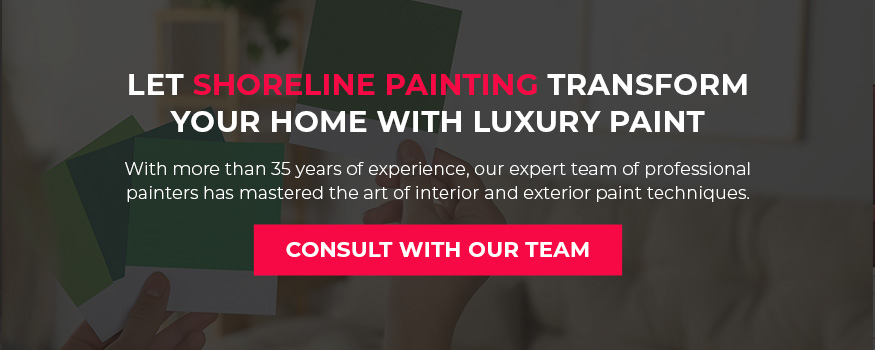What Makes High-End Paint Different Than Lower-Quality Options?
October 11, 2024
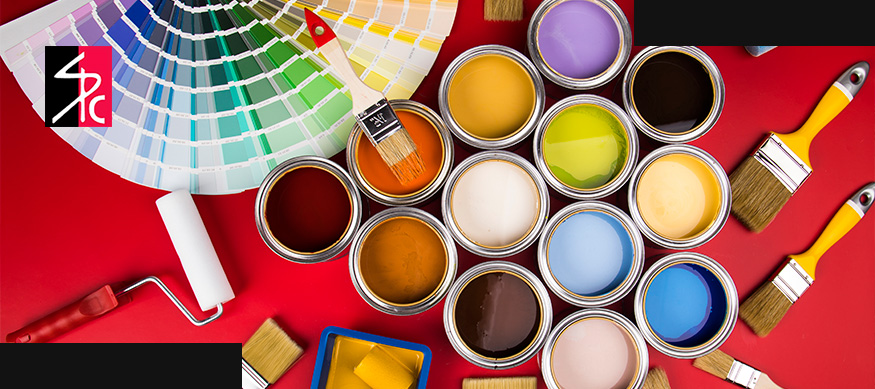
There’s a seemingly endless variety of paint products on the market. Beyond the expansive selection of colors that includes just about every tint and shade imaginable, you’ve probably noticed some paints are pretty pricey while others have incredibly low price tags. You might feel tempted by the cheaper varieties that seem to offer comparable durability and coverage. Choosing lower-quality paint could help you save a lot of money, so you might wonder if expensive paint is worth it.
Low-quality paint typically offers one benefit: the lower price tag. Even though the upfront cost is easier on the pocket, you may end up spending more in the long run when you choose cheap paint. Before prioritizing a lower price point, consider the benefits of investing in higher-quality house paints.
What Makes High-Quality Paint Stand Out?
There’s so much more to high-end paint than the upfront cost. When you choose quality paint, you’re investing in quality key ingredients. Explore the benefits of high-end paint below.
Better-Quality Ingredients
Luxury paint has a higher price tag due to its higher quality. The ingredients determine the quality, and high-end paint products contain all the right ingredients:
- Pigment: This ingredient determines texture, color and opacity. While high-end paints contain prime pigments that ensure vibrant colors, cheap paints contain extender pigments. The latter type of pigment is more affordable, but it yields far less opacity than prime pigments.
- Binder: This ingredient holds the pigments together and ensures a dry film on the surface. The binder determines the paint’s performance by influencing adhesion, washability and color retention. Expensive paint contains a quality binder to ensure long-lasting results.
- Additives: Rheology modifiers, mildewcides, dispersing agents and preservatives are a few additives found in paint. Rheology modifiers ensure an even drying coat, mildewcides can prevent mildew growth and preservatives increase shelf-life. High-end products contain quality additives that add value, while cheaper options skimp on these extra ingredients to keep costs low.
Another key difference between luxury and low-quality paint is the liquid-to-solid ratio. While paint needs some liquids or solvents, the solid content determines important characteristics like opacity and coverage. High-end products tend to have a higher ratio of solid ingredients.
Exceptional Durability
Thanks to the prime pigment, quality binder, right additives and low liquid-to-solid ratio, high-end paint is more durable. The higher solid content ensures the paint is thicker, which provides optimal coverage. In contrast, cheaper products are typically thinner and more watery.
The quality binder ingredient in expensive paint makes it more durable than cheaper varieties. This means that high-quality paint won’t fade quickly. There’s also less risk involved when washing the surface because the binder will prevent wear and tear that could lead to damage and color loss. Cheaper products may crack and fade quickly due to a lower-quality binder ingredient.
The quality ingredients in high-end paint ensure you’ll need fewer coats to enjoy long-lasting durability. With this in mind, you’ll likely end up spending more on cheaper products to get the same result. You’ll need to apply more coats to achieve coverage, and you’ll need to repaint more often as the paint fades and wears down sooner.
Better Coverage and Color Opacity
When purchasing paint, it makes sense that color performance is an important characteristic. Luxury paint offers impressive color retention properties.
Cheaper paints are diluted with extender pigments and more liquids, resulting in lower color consistency and notably lower color opacity. Higher-quality varieties adhere smoothly to surfaces and dry more slowly, ensuring fewer brush strokes are left behind.
Low-quality paints are thinner, so they dry quicker and tend to leave visible brush strokes. While visible brush strokes are already an eye sore, when paired with reduced color opacity, achieving seamless and even results can be difficult and time-consuming. With high-end paint, it’s possible to achieve consistent, smooth results with few coats.
Less Maintenance and Upkeep
Maintenance is a critical factor in choosing interior and exterior paint. However, it is a tricky undertaking when it comes to cheap paint. Because cheaper varieties fade and wear down quickly, you must be careful when wiping down walls. You may not be able to scrub stubborn dirt off without scratching the paint and damaging the surface.
Regarding quality paint for houses, you can keep your interior walls clean by wiping them down with a damp, soft cloth. You can use a mild soap solution to wash away stains without impacting the appearance of the paint. You can use a pressure washer or garden hose to remove dirt from exterior walls without damaging the paint.
How Long Can You Expect Your Paint to Last?
Exterior and interior paints offer different longevity timelines. In either case, luxury paint varieties can last far longer than cheaper products.
While it’s recommended to repaint your interiors every five to 15 years, you might need to repaint sooner if you choose cheap paint. When investing in a coat of luxury interior paint, you’ll only really need to repaint when you want to change your home’s color scheme rather than cover imperfections and faded surfaces.
High-end exterior paint can last a decade or longer, depending on the climate. If you choose low-quality exterior paint, you may need to repaint your home every five years or sooner.
The Impact of Professional Application
Quality application is as important to longevity as paint quality. Even when investing in luxury pigments, application techniques influence longevity and color results.
High-end paints are always worth the initial splurge because they can offer perfect color results, an even coat and a lasting finish. Whether you choose matte, eggshell, semi-gloss or high-gloss paint, high-end products really can promise perfect results.
At Shoreline Painting, our professional painters use luxury paint and expert artistry to achieve perfect results. Our expansive portfolio of completed projects showcases the importance of high-quality paint.
This particular project we completed in Darien, Connecticut, is an excellent example of the importance of color consistency. With this welcoming beige palette, an even coat is as crucial as color opacity to the final results.
Let Shoreline Painting Transform Your Home With Luxury Paint
Cheap paint may seem like a pocket-friendly choice at first, but you’ll need to use more paint to apply several coats to each wall. Moreover, you’ll need to repaint more often. When choosing high-end paint, you can enjoy better results with fewer coats.
Shoreline Painting is a Fine Paints of Europe Master Certified Painter. With more than 35 years of experience, our expert team of professional painters has mastered the art of interior and exterior paint techniques.
Consult with our team to transform your home with luxury paint. If you’re not sure which color palette will complement your home’s architecture, our expert color consultants can help you choose a dazzling palette of luxury colors.
Recent Posts & Guides
